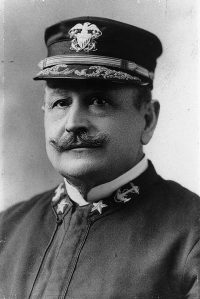Went on shore to-day and went all over the city, and returned to the ship with a very poor opinion of Manila. The city is on the banks of the river Pasig and is built on the segment of a circle between the river and the sea. Its suburbs extend over numerous islets formed by the Pasig and its branches, and are reached in all parts by either carriages or boats; but the former method of conveyance is the most aristocratic. Behind the city are extensive plains which rise into hills and finally into mountains several thousand feet high.
On the north side of the river is the suburb in which are the residences of all Europeans and is by far the most aristocratic part. The aspect of the whole is decidedly Spanish and Oriental. Long lines of batteries, sombre churches and ungainly towers with narrow, dirty streets meet the eye everywhere. In the suburbs are light, airy cottages, raised on posts to permit the free passage of waters in the rainy season; and they are so constructed as to be very elastic so as to withstand the shock of earthquakes, to which Manila is subject at intervals.
The streets generally are straight and unpaved, with bridges across the river at intervals. The bridge that crosses the river in the Binondo district comes on a street called the Escolta, which street is lined with numberless bamboo shops and stalls where a foreigner is able to find anything. The street is crowded with a motley population of all races, Chinese, Portuguese, Indians and half-breeds.
The public buildings are the palaces of the Governor and Bishop, the cathedral, town houses, churches of different denominations, monasteries, convents, arsenal, prisons and cigar factories, etc. There are several squares, the largest, the Prado, having a bronze statue of Charles IV.
Manila, like many of these Oriental cities, is fast going to the dogs. It is admirably fitted by nature for trade and if it were not for her people and government it would shortly be one of the first cities in the East as far as trade, etc., is concerned. Her chief manufactures are Manila cordage, cigars, cheroots and the beautiful fabrics called piñas, woven from the fibers of the pineapple leaf and afterward beautifully embroidered, which bring a very high price in the market.
The city has been destroyed several times by earthquakes, the last being on June 3, 1863, which laid most of the city in ruins and killed nearly five thousand people, i.e., including Chinese.
It now being Lent the city is unusually dull and stupid, the celebrated “Manila cock-fighting” being the only amusement the people have. I am tired of Manila already and hope that the ship may never be ordered here again—at least not until our supply of cigars and cheroots gives out, and then only for a very short time.
